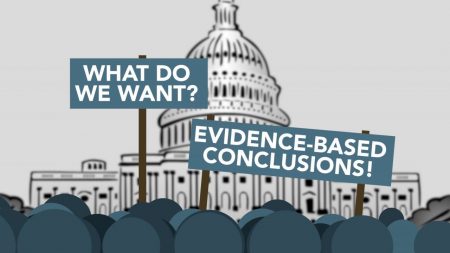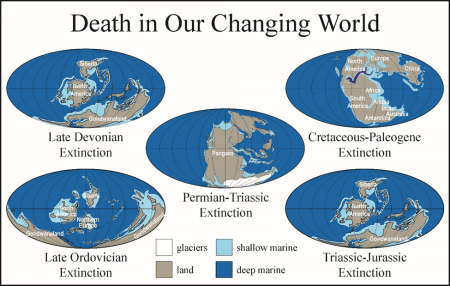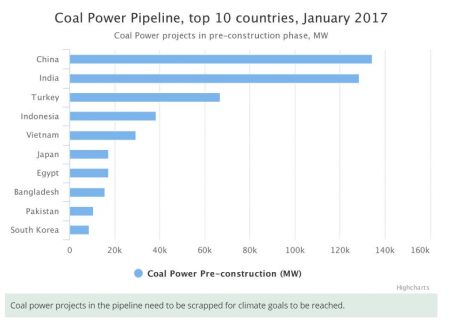
Today we honour the Earth in a tradition that is now going on almost 50 years. The first Earth Day was instituted during the administration of President Richard Nixon as a response to polluted water and air in America. Nixon established the Environmental Protection Agency (EPA) shortly after the first celebration of the Earth and that tradition has continued until today.
Today also marks the March for Science with researchers and academics along with students and private citizens all engaged in showing their support for the scientific method, factual evidence, and the truth. The march is happening in Washington, DC, and in more than 400 other cities and locations around the planet. It is a reaction by scientists to “alternative facts” being dispensed as truths. It is a reaction to proofs over beliefs. When an American Vice President calls for evolution and creation science to be taught equally in elementary and high schools across the nation, referring to them as equal theories, and when an American President calls climate change a hoax perpetrated by the Chinese to destroy the American economy, it is not surprising that scientists speak up.
The world has entered a moment in time, a tipping point that may lead to disruption of the environment as never seen before by our species. Other forms of life have endured through environmental changes on this planet in the past. Continents have wandered. Mountain ranges have risen and washed away. Oceans have risen and covered parts of the continental land masses. And Ice Ages have scoured the landscape, lowered and raised sea levels between freezes and melts, reshaped continents, created bridges to new land where life could find new purchase.
Through the billions of years the Earth has existed it has gone through enormous changes on the surface. The Sun, our energy engine in the centre of the Solar System, has also undergone change as the billions of years have passed. Some 400 million years ago when animal life first emerged from the sea onto dry land the Sun was younger and weaker than today. This was a period on Earth when the continents were covered in green. As the plants experienced life and death they created the carbon that became the fossil fuels we have been burning for over a century. The cycle of carbon drawn into living plants followed by dying and carbon release created high levels of carbon dioxide (CO2) in the 400 million-years-ago atmosphere. Even with a weaker Sun the climate of that time was warmer than today because of CO2. And since that time CO2 has fallen and gone back up again in very natural cycles over million-year time periods. These variations correspond to the movement of continental plates, episodes of extreme volcanism, the weathering of the Earth’s surface and other natural carbon sinks to help trap CO2 within the Earth and other geological processes. And even though our Sun today is nearly 40% brighter than 400 million years ago, the Earth’s geological aging has created continuous adaptation for life to flourish. That doesn’t mean extinction events haven’t happened (see image below). They have and some have killed off close to 90% of all living things on the planet.
So changing climate which includes global warming and cooling has very much been an undeniable part of the planet’s geological record. But geology moves in slow cycles while humans don’t. In the short period we’ve been around, and particularly in the last 150 years of our species existence, we have introduced speed into the equation. The last time CO2 levels in the atmosphere exceeded 400 parts per million (ppm), we humans didn’t exist. And 400 million years ago CO2 levels were 2.5 times what they are right now. In fact, since that time the general trend for CO2 has seen a drop of 3.4 ppm on average for every million years. There have been greater dips and higher spikes over the 400 million years. For example 300 million years ago Earth experienced an ice age with CO2 levels below 300 ppm. A hundred million years later the Earth’s atmosphere overheated as CO2 levels rose to almost 2,000 ppm. Scientists speculate that the peaks happened because continental plates shifted causing landmasses to collide, throwing up mountain ranges, and unleashing extreme vulcanism, filling the atmosphere with high concentrations of greenhouse gasses. And the valleys that subsequently followed happened as weathering and erosion trapped greenhouse gasses underground.
Geological influences on climate will always be around. Humans may not. The pace of climate change we create may lead to our extinction. Looking to the future at our present rate of putting greenhouse gasses into the atmosphere, with no change in behaviour, CO2 levels will exceed 1,000 ppm by 2100. The most recent reports from the United Nations panel on climate change (IPCC), projects 1,370 ppm by century end, and 2,000 by 2250. That exceeds CO2 levels of 200 million years ago. Add in a Sun that is close to 40% brighter and we are indeed in unknown territory for life on this planet. There is no doubt life will continue but adaptation at a pace that equals the rate of change is difficult. The likely end result will be mass extinction comparable to previous events evident in the geological record.
So how do we reverse the trend that will push us past 1,000 ppm by the end of this century?
The International Energy Agency (IEA) has published two reports that provide a roadmap to limit the global mean temperature rise to 2 Celsius (3.6 Fahrenheit) degrees and a peak at 450 ppm.
In the first report, even without the United States participating in the Paris climate agreement, it states that if a combination of countries stop using coal the planet could achieve the 2 Celsius rise limit. A combination of China, India, Indonesia, Japan, Bangladesh, Pakistan, Vietnam, Thailand, South Korea, and a few more smaller nations would drop current annual CO2 emissions by half. The report goes on to state that stopping the use of coal would have to be accompanied by the growth of zero-emission energy sources at a rate between 12 and 18% annually from now until 2030. That would make wind and solar the predominant sources of electricity on the planet.
In the second report, the IEA looks at the mid-century mark and describes how 95% of world electricity production could come from low carbon. Other key data points in this report:
- coal would be eliminated as an energy source with natural gas as an intermediary during the period when wind and solar ramped up
- 70% of all vehicles would be electric
- existing buildings would be retrofitted
- industry would be 80% less carbon intense
- investment of between $20 and 40 trillion over the next 35 years
- Between $7 and 14 trillion would be invested in wind and solar energy
- Between $3 and 6 trillion on smartening the grid and utility battery storage
- carbon intensity of the energy industry would decrease from 516 grams per kilowatt-hour (2014 levels) to 117 in 2030 and 30 in 2050.
- The rate of new solar and wind build would yield 190 Gigawatts per year.
Based on recent announcements from China and India committing to freeze construction of new coal-fired power plants, and retire existing plants, the transition has begun. Now the rest have to make similar commitments.







